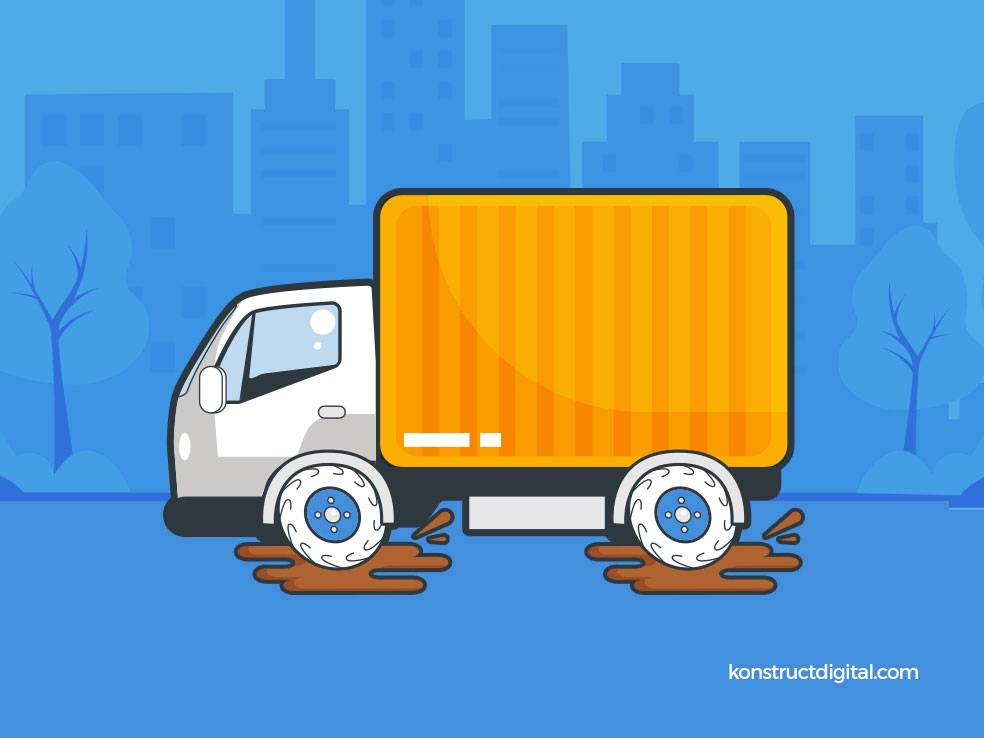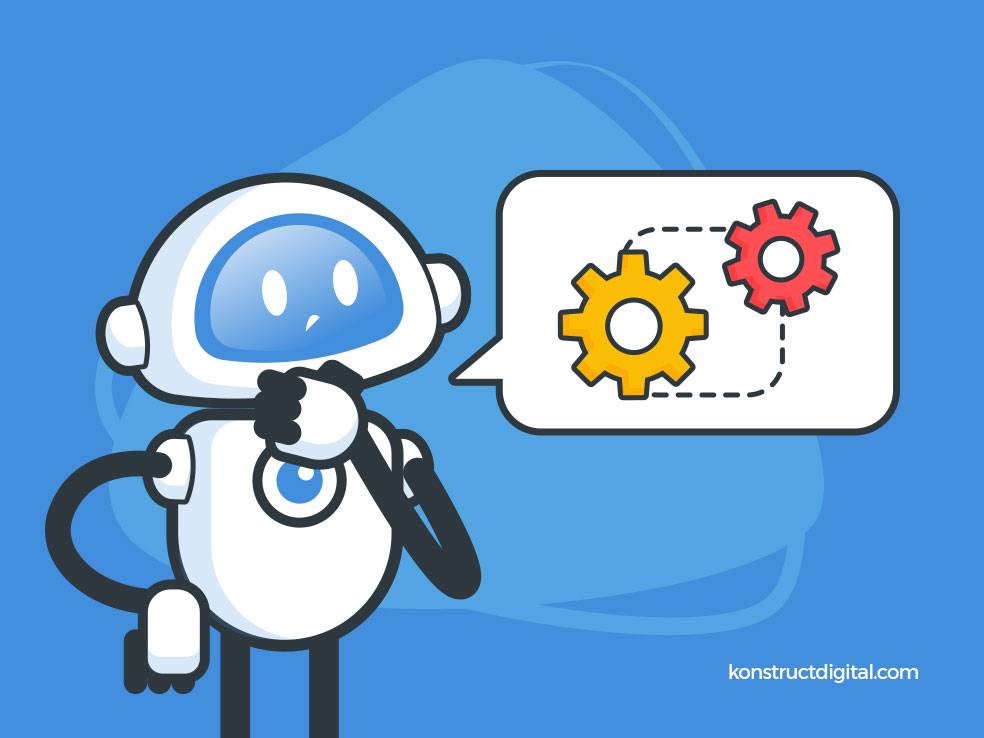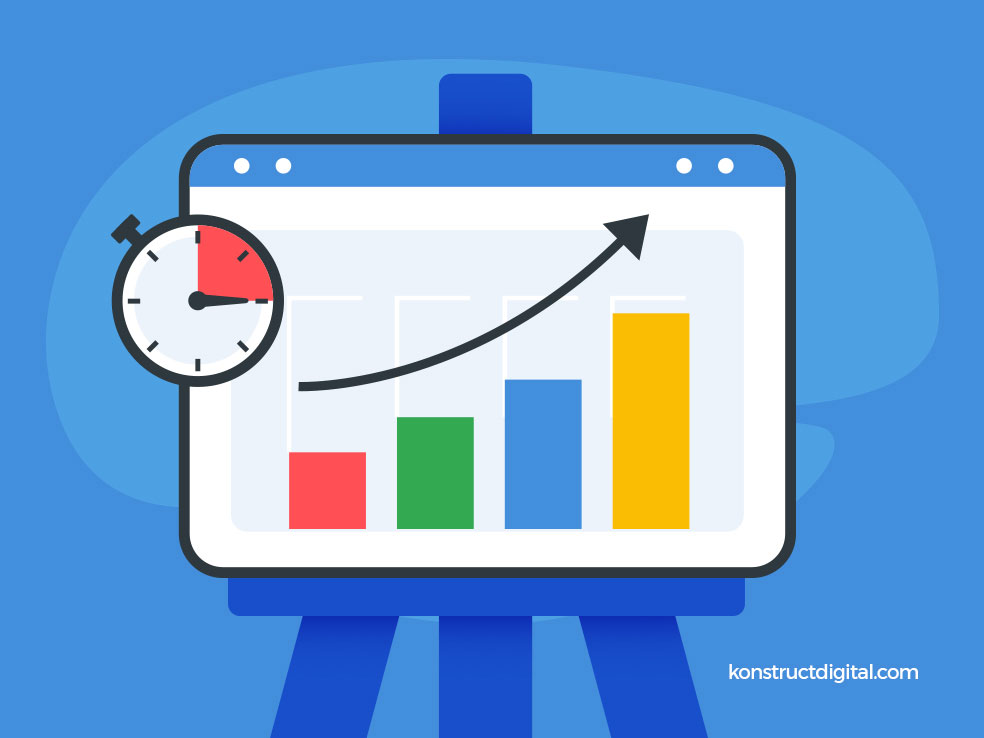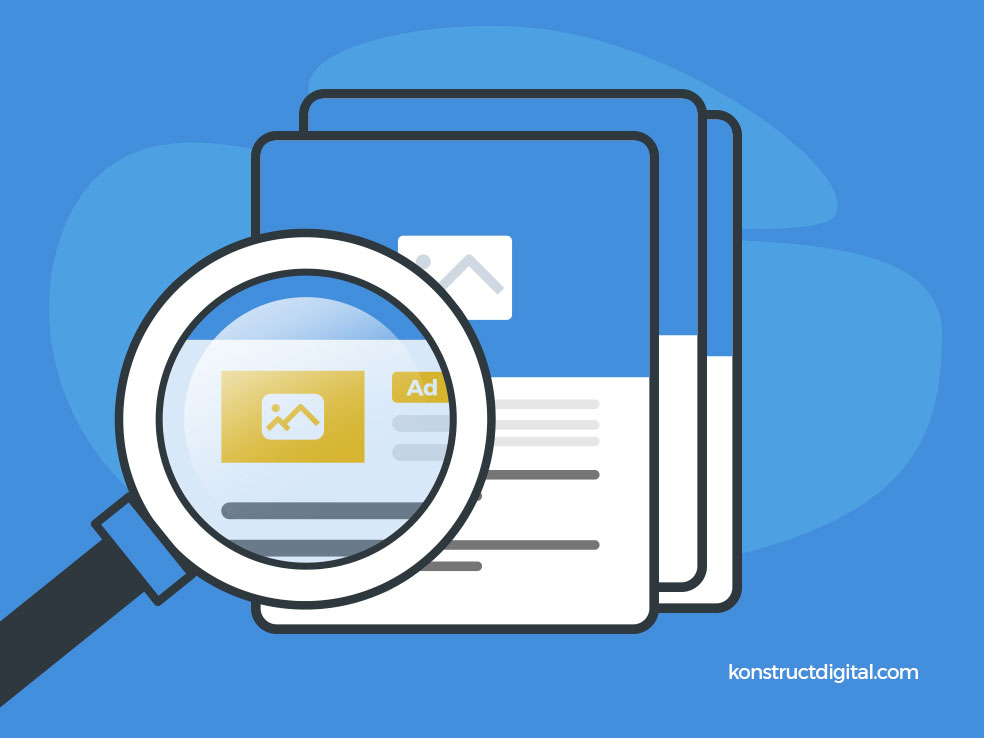Google Ads automated bidding strategies have blossomed over the years as the go-to method to leverage the company’s many advancements in AI and machine learning. However, you would do well to heed the warning of many quintessential sci-fi stories and movies and work diligently in order not to find yourself with an AI uprising on your hands, spiralling out of control.

To employ another metaphor, successful machine learning is akin to growing a houseplant. The plant will flourish only when a very specific set of parameters are respected: water, nutrients, light, and more. A bit too little of this, a little too much of that, and the plant falls out of the Goldilocks zone.
You should approach your campaigns the same way. Don’t let the AI run amok. Feed it with the data it needs, nurture the campaigns, and monitor the results.
1. Identify Your Goals (and KPI)
You’ve probably heard it so many times. Don’t do anything until you’ve identified your business objectives and your digital campaign goals. Because auto bidding strategies are intimately intertwined with the campaign goal and its KPI, you need to sit down and take a good hard look at the results you want to see.
You’ll also need to verify if your tracking and analytics infrastructure allows for optimization to the desired KPI. After all, you can’t ask more of what you don’t have. This certainly applies to conversions, but also revenue through ROAS.
For example, we’ve witnessed many situations where users had set their campaigns to “Maximize conversions” when they were driving no conversions! Even if the tracking is sound, you can’t ask of the AI to drive more conversions if it doesn’t have an idea of what a conversion —and most importantly, a bucketload of conversions— looks like. Just like a vehicle stuck in the mud spinning its tires, the AI will dig a deeper and deeper hole trying to reach the unattainable. Costs will spiral out of control as machine learning reaches further and further trying to accomplish what might be impossible (or very improbable).

So you’ve got your campaign goals figured out. The tracking pipeline is connected. You’re ready to dive in and lay down some rules for your own personal AI to follow. What could go wrong?
2. Set a Confident Performance Benchmark
You’ve got a brand new campaign and set it on its merry way. It’s all automated and you dust your hands off for another job well done.
Wrong!
When you or your team comes back around, in a day, a week, a month, how will you be able to tell the AI is performing its best? Has your faithful robot been slacking on the job? Have the data analytics you’ve been feeding it been sufficient?
Having a strong, confident baseline for performance will allow you to evaluate whether the automated performance is fulfilling expectations. This baseline could be simply extrapolated from general business intelligence and in-house data. Were your goals “SMART goals”? As you may know, the S & M stand for Specific and Measurable, so perhaps you’ve already set yourself a meaningful way to define success.
SMART or not, we advocate that you should have past performance results from a similar campaign as a solid base to your decision making. Maybe you ran the exact same campaign last year, or maybe you’ve run a similar effort in different markets just recently.
Even better? For smaller budgets or lower conversion volumes, launch your new campaign on manual bidding, preferably in adept hands, and optimize aggressively for 2-3 months. Set your own “best-case scenario” baseline with the exact same campaign you aim to automate. Once your campaign approaches maturity in terms of results and you’ve (manually) squeezed all the performance you can, then you can set the bar for the AI to aim for.
It might be a tough ask to follow through for the automation, but at least now you know what “could be”. In other words, this is now a high-water mark to strive for.
However, for larger campaigns, the safest and most elegant way to proceed is simply to leverage Google Ads’ Experiments and to perform a true 50-50 split A/B test between a manually-optimized campaign and its automated, robot doppelgänger. Make sure you run the experiment for as long as you need for enough data to accrue. As with any digital marketing testing, you’ll want your dataset to be large enough to be able to make confident decision making.
Boom! You’ve either set your own benchmark with grounded performance data or performed your own 50-50 experiment to your satisfaction.

3. Selecting the Right Google Ads Automated Bidding Strategy
You now have your goals and your KPI, and a solid performance benchmark to boot. While in most cases selecting the right auto bidding strategy should be as simple as matching your goals and KPI to the matching automation, it is still worthwhile to carefully assess your options. When in doubt, start thinking about how you could test different strategies and pit them against each other!
Non- & Partially-automated Strategies
A. Manual Bidding
Well, not much of an automated strategy, is it? Manual bidding is aptly named, as it’s fully manual with no extra frills. It requires a lot of vigilance (and man-hours!) to stay on top of things, and very hard to fully leverage all the bid adjustments that are available to the user. When you factor in seasonality as well as shifting user behaviours & preferences, it becomes very time-consuming for even the most able expert to stay on top of things. It goes without saying that this depends on the size of the campaign or account, its budget and keyword breadth.
B. Enhanced CPC
Manual bidding’s younger brother, Enhanced CPC (ECPC) still leaves you in the driver seat, albeit with a dash of AI automation. This strategy will automatically adjust your bids on-the-fly using auction-time signals to meet your conversion or conversion value goals. At the end of the day, your max. CPC bids still rule the AI, and the latter will ensure its own bids’ average stay within the prescribed framework over time.
C. Maximize Clicks
Ask yourself the real questions: Do you want clicks and traffic? Do you REALLY want clicks and traffic? Unless you’re going for a purely awareness-driven campaign, the odds are that no, you don’t. Refer back to your aforementioned business goals. Low-quality and poorly-qualified traffic is just as bad as no traffic at all. Or worse, considering you are paying for it!
Maximize clicks will do just that: optimize for the cheapest clicks so you get the most click volume. What if your best customers come from a search query with high competition and higher CPCs? Too bad, Maximize clicks doesn’t care for that.
While there is a time and place for Maximize clicks, we can’t say we are huge fans. Consider it if: 1) you have no conversion tracking in place, 2) you have very low conversion volumes, 3) you have no appetite or expertise for ECPC bidding, and/or 4) you strategically need a large volume of traffic and your Search setup is bomber in terms of qualifying traffic (ie. not too Broad).
D. Maximize Conversions
Ah, Maximize conversions. The next step up from Maximize clicks, this strategy is sure to break some hearts. Similarly to Maximize clicks, this strategy will do anything to get you the most conversions. But be careful!
The number one rule of Maximize conversions is you first need the data! While Google officially recommends a minimum of 30 conversions in the last 30 days, you’d benefit from having more. The more conversion data you have, the better the machine learning will fare, and the shorter the learning period will be! Careful, account recommendations in Google Ads often recommend this strategy at much lower conversion levels. Explore at your own risk!
It’ll also do everything in its power to get you the most conversions for the budget you set it at. If your daily budget is too high, it will struggle to drive them and will spend more and more cost per click trying to reach the elusive next conversion. Make sure you tweak your budgets accordingly and don’t set the bar too high. We recommend selecting campaigns that have a bit of overhead in terms of impression share, otherwise, you might be forcing the AI to chase the same clicks you were already getting.
E. Target Cpa
Target CPA is a bit like a refined Maximize conversions. You set your target cost-per-action (read: cost per conversion), and the AI does the rest. Again, it might get specific conversions at a higher or lower price point, but it’ll all average out over time.
Like so many other automated bidding strategies, Target CPA is its own art form. For one, don’t set a CPA that’s too aggressively low, because the AI will struggle to find conversions and your campaign will underspend. Having a solid performance benchmark or baseline, either from internal business data or past campaign performance, is crucial to determining a good Target CPA.
This strategy is often likely to underspend, conversely to Maximize conversions that’ll always try to spend the full budget no matter what. Furthermore, those CPA targets you set are static over time. You should revisit them often and push them ever so slightly lower should they perform at their current level. Make sure you also take into account seasonality and other factors that could influence your CPA over time.
Don’t leave those targets static!
F. maximize Conversion Value
Related to Max Conversions, this strategy will spend (all) your budget while chasing the most valuable conversions. You need to have conversion values set up for this to work! Either you have an e-commerce website with all the revenue data that it entails, or you’ve pegged conversion values to the conversions on your site. How much is a form submission worth to you?
G. Target Roas
Just like Max conversion value is a step beyond Maximize conversions, Target ROAS (Revenue on Ad Spend) is the next step beyond Target CPA. You set a target level, and the algorithm takes care of the rest. The risk remains: set it too low and you won’t see much action, nor spend much money! Look to your business objectives and historical performance for ideas. And remember to review your targets every once in a while!
H. Target Impression Share
Maybe you just want your ads to dominate the search results. Target Impression Share allows you to do just that. Select either: 1)the absolute top of the results, 2)the top of the page or 3)anywhere on the page, and select a percentage of the time you want your ad to show up in that selected position. For instance, if you select the top of the page at 50%, the bidding strategy will automatically adjust your bids so that your ads show up –you guessed it– 50% of the time at the top of the page.
This strategy could be useful on niche campaigns with limited keywords, or when dominating over a competitor is a must. However, like Maximize clicks, it turns a blind eye to actual on-site results.

4. Waiting Out the Learning Period
It pays to be patient once you’ve launched your new bidding strategy. The learning period should usually take a bit more than a week to perhaps two weeks. Obviously this all depends on the amount of data (clicks, conversions, conversion value) you feed the learning algorithm. The more, the better, the faster.
Don’t be too hasty at pulling the plug if performance doesn’t meet expectations. The learning period is usually a chaotic period of upheavals while the AI is trying to find its feet within the parameters you specify. Wait two weeks, and try to discern whether performance has stabilized, and at what levels. Be critical. Have you set targets too low on Target-type strategies, or have you set your budget too high on Max conversions/conversion value? Tweak, tweak, tweak.

5. Set it and Forget it?
Is that it? Automation means you don’t need any other user input, right?
Absolutely not.
A skilled hand at the helm of the AI-driven campaign will always triumph. You’ll need to check in periodically to make sure results are still coming in, and to prevent the AI from spiralling out of control should they not be. Tweak your automation targets and iterate upon them.
There’s also a plethora of manual non-bid optimizations you could perform in the account, including but not limited to diving semi-regularly into the Search terms report to weed out new keyword exclusions and expand into valid new queries. You could test out audience layering on your campaigns, and split out key performing audiences on their own spin-off campaigns to leverage a dedicated share of the media budget.
Start Automating!
Be deliberate in using these automated strategies. They can be a blessing, or they can be a curse.
You need to take a long hard look at what you want and what you have. As always, don’t be afraid to hypothesize and experiment.
In the end, don’t let your AI run amok. Set strict, well-thought-out parameters and keep a watchful eye on its performance. Make the AI your friend, not your enemy, and maybe, just maybe, you’ll stand a chance when the robots take over.
Contact us to find out how our PPC experts can help you drive the highest quality traffic to your sites for the lowest possible cost per click.
Automated Bidding Cheat Sheet
- What do you want for results (business/campaign goals)?
- What do you have for data (existing tracking, performance benchmarks, data & conversion volumes)?
- Look closely at what you want vs. what you have, and identify the best strategy.
- Don’t set it and forget it.
Need help with B2B PPC?
Learn more about Konstruct's B2B PPC Services
More B2B PPC Resources
- Do B2B Google Ads Campaigns Need Siloed Landing Pages?
- The Do’s and Don’ts of B2B LinkedIn Ads
- How to Target Facebook Ads: The Ultimate Guide for Success
- How Much Does it Cost to Advertise on Facebook in 2023?
- Don’t Optimize Your Facebook Ads Too Soon!
- Facebook Ads Tip: The “Engaged Shoppers” Purchase Behaviour
- Google’s Death Blow to Third-Party Cookies: What’s Next?
- A Quick Guide to Managing Google Ads
- 5 Reasons Not to Blow Your B2B Ad Budget Over the Holidays
- A Beginner’s Guide to Native Advertising
